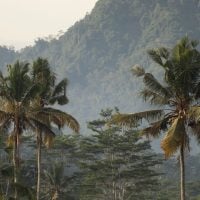Forest conservation is a critical component of environmental sustainability and biodiversity preservation. Forests cover approximately 31% of the Earth’s land area and are home to more than 80% of terrestrial species. They play a vital role in regulating the climate, purifying air and water, and providing habitat for countless organisms.
Moreover, forests are essential for the livelihoods of millions of people worldwide, offering resources such as timber, food, and medicine. The loss of forests due to deforestation, urbanization, and climate change poses a significant threat to global ecosystems and human well-being. The importance of forest conservation extends beyond ecological benefits; it also encompasses social and economic dimensions.
Healthy forests contribute to the economy by supporting industries such as tourism, agriculture, and forestry. They also provide ecosystem services that are often undervalued, such as carbon sequestration, which helps mitigate climate change. Furthermore, forests are integral to the cultural identities of many indigenous communities, who rely on them for their traditions and way of life.
Therefore, investing in forest conservation is not only an environmental imperative but also a socio-economic necessity that can lead to sustainable development.
Researching Available Grants for Forest Conservation Projects
Researching Funding Opportunities
Online databases such as GrantStation, Foundation Center, and Grants.gov can be invaluable resources for locating grants tailored to forest conservation efforts. These platforms provide comprehensive listings of available grants, including eligibility requirements, funding amounts, and application deadlines.
Networking and Building Connections
In addition to online resources, networking with other organizations involved in forest conservation can yield valuable insights into potential funding sources. Attending conferences, workshops, and seminars focused on environmental issues can help build connections with funders and other stakeholders in the field.
Collaboration and Local Engagement
Engaging with local environmental groups or universities may also uncover lesser-known grants or collaborative opportunities that can enhance project visibility and credibility. By leveraging these resources effectively, organizations can increase their chances of securing funding for their forest conservation initiatives.
Securing Funding for Forest Conservation
By combining thorough research, strategic networking, and local engagement, organizations can create a robust approach to securing funding for their forest conservation initiatives, ultimately contributing to the protection and preservation of the world’s forests.
Identifying Eligibility Criteria for Grant Opportunities
Once potential grants have been identified, it is crucial to carefully review the eligibility criteria associated with each opportunity. Grantmakers often have specific requirements regarding the type of organization that can apply, the geographic focus of the project, and the intended beneficiaries. For instance, some grants may be exclusively available to non-profit organizations or educational institutions, while others may welcome applications from community groups or governmental entities.
Understanding these criteria is essential to ensure that your organization qualifies before investing time and resources into the application process. Additionally, grantmakers may have preferences regarding the types of projects they fund. Some may prioritize innovative approaches to forest conservation, while others might focus on community engagement or scientific research.
It is important to align your project goals with the funder’s mission and objectives to enhance your chances of success. By thoroughly assessing eligibility criteria and aligning project proposals with funder priorities, organizations can streamline their efforts and focus on opportunities that are most likely to yield positive results.
Crafting a Compelling Grant Proposal for Forest Conservation
A well-crafted grant proposal is crucial for securing funding for forest conservation projects. The proposal should clearly articulate the project’s goals, objectives, and expected outcomes while demonstrating a deep understanding of the issues at hand. Start by providing a compelling narrative that outlines the significance of the project within the broader context of forest conservation.
Highlight any unique aspects of your approach that set it apart from other initiatives and emphasize how it aligns with the funder’s mission. In addition to a strong narrative, a successful grant proposal should include a detailed budget that outlines how funds will be allocated. This budget should be realistic and transparent, providing justification for each expense.
Furthermore, including a timeline that outlines key milestones can help demonstrate the project’s feasibility and your organization’s capacity to execute it effectively. Finally, consider incorporating letters of support from partners or stakeholders who can vouch for your organization’s credibility and the project’s potential impact. A comprehensive proposal that combines narrative strength with practical details will significantly enhance your chances of securing funding.
Navigating the Grant Application Process
Navigating the grant application process can be daunting, but understanding the steps involved can simplify the experience. First and foremost, it is essential to adhere strictly to the application guidelines provided by the funder. These guidelines often include specific formatting requirements, word limits, and submission procedures that must be followed meticulously.
Failing to comply with these instructions can result in disqualification, regardless of the proposal’s quality. Once you have prepared your application materials, consider seeking feedback from colleagues or mentors who have experience in grant writing. Their insights can help identify areas for improvement and ensure that your proposal is clear and persuasive.
After finalizing your application, double-check all components for accuracy before submission. Keep track of deadlines and follow up with funders if you do not receive confirmation of receipt within a reasonable timeframe. By approaching the application process methodically and proactively, organizations can enhance their chances of success in securing funding for forest conservation projects.
Leveraging Additional Resources for Forest Conservation Projects
Alternative Funding Sources
Crowdfunding platforms like GoFundMe or Kickstarter offer an alternative means of raising funds by engaging individuals passionate about environmental issues. By creating compelling campaigns that tell a story about your project’s impact on forest conservation, you can tap into a wider audience willing to contribute financially.
Partnerships and Collaborations
Partnerships with local businesses or corporations can lead to sponsorship opportunities or in-kind donations that support project implementation. Many companies are increasingly interested in corporate social responsibility initiatives and may be willing to collaborate on projects that align with their values. Additionally, engaging volunteers from the community can help reduce costs while fostering a sense of ownership among local residents regarding forest conservation efforts.
A Multifaceted Approach to Securing Funding
In conclusion, securing funding for forest conservation projects requires a multifaceted approach that includes thorough research on available grants, understanding eligibility criteria, crafting compelling proposals, navigating application processes effectively, and leveraging additional resources. By employing these strategies thoughtfully and strategically, organizations can enhance their capacity to protect vital forest ecosystems for future generations while contributing to broader environmental sustainability goals.









































